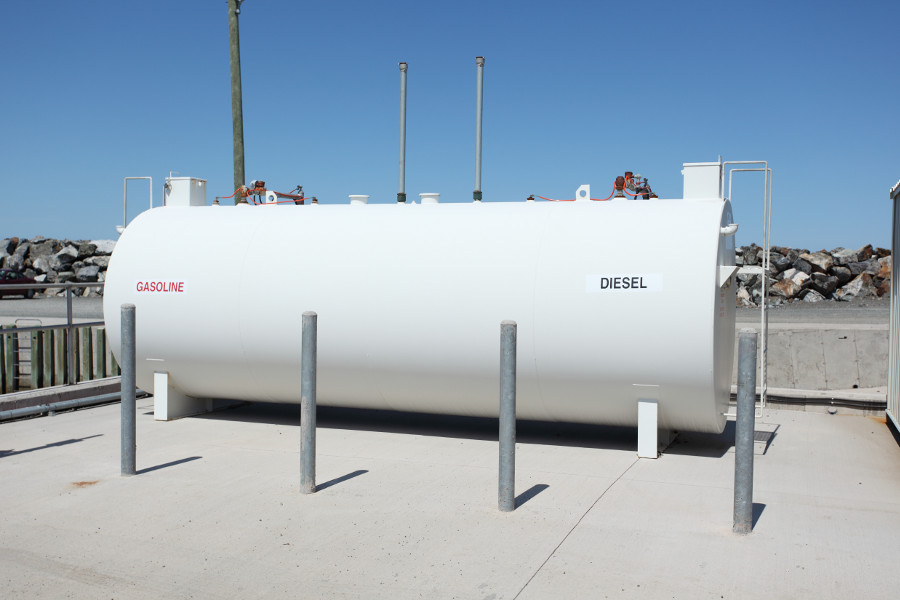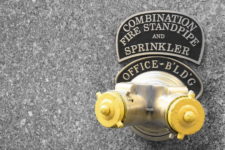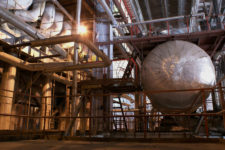One of the biggest compliance problems plaguing owners and managers lately are DEC-regulated oil storage tanks. The DEC (a New York State agency, as opposed to a NYC agency) adjusted regulations for tanks in 2015, and property teams have been trying to keep up since. Violations are being issued for leaks, secondary containment systems, incorrect paperwork, tank access, and more – some in excess of $15,000.
CHIP recently hosted a seminar featuring a representative from the DEC and expert Ken Cammileri from Original Energy. Here’s three key takeaways we got from this session to help prevent tank-related violations:

Know Your Tank
Tanks fall into one of two types (Aboveground Storage Tank or AST, or Underground Storage Tank or UST), and one of three Categories (Category 1, 2, or 3). Depending on how your tank is classified, it will be impacted by specific regulations and require different tests.
Underground Storage Tanks are defined as tanks that have 10% or more of their volume beneath the surface of the ground or covered by materials. Exceptions to this definition are tank systems in an “accessible underground area” (where you can walk around the entire tank and see the top/bottom), or tanks that are completely above ground and enclosed by pre-fabricated secondary containment or insulated to store heated petroleum. With that said, “covered by materials” can include situations where tanks are fully encased in concrete/concrete blocks. All other tanks outside of these specifics are designated as Aboveground Storage Tanks. If you’re unsure about your particular tank’s designation, contact your environmental vendor or the DEC to confirm.
Categories are sorted strictly by date. All tanks installed before December 27, 1986 are Category 1 tanks. Tanks installed from that date through October 11, 2015 are designated as Category 2 tanks. Tanks installed after October 11, 2015 are Category 3 tanks.

Know What’s Required For Your Tank
Category 1 Tanks must have an annual tightness test, and the report must be submitted to the DEC. An exception is any tank encased in concrete with original weep holes – openings in the concrete used to detect leaks, created when the tank was encased. Weep holes must be directly visible at all times.
In addition to the above, Category 1 tank owners may also use automatic tank gauging (not manual, and at least 0.2 gal/hr), vapor monitoring, groundwater monitoring, and interstitial monitoring as ways of detecting and monitoring leaks. That said, some of these methods aren’t really feasible for NYC oil tanks.
Category 2 and 3 UST tanks must have secondary containment and meet the following requirements:
- Tank corrosion resistance
- Tank secondary containment
- Tank leak monitoring
- Overfill prevention
- Piping corrosion resistance
- Piping leak monitoring
- As-built plans/drawings (with additional requirements here for Category 3)
Category 2 and 3 ASTs must have secondary containment if over 10,000 gallons. ASTs under that threshold and is in close proximity (within 500 horizontal feet) to sensitive receptors like storm drains must have secondary containment or utilize a design or technology “such that a release is not reasonably expected to occur.” In addition, they must meet these requirements:
- Welded steel
- Surface coating
- Cathodic protection for a tank resting on soil
- Impermeable barrier for a tank on grade
- Leak monitoring between the tank and the barrier
Original Energy created a sample inspection checklist for tanks – you can download it here.

Know What to Do When Your Tank is Out of Service or Leaking
This is especially important for properties that switched to gas, but may still have a tank with oil in it: out-of-service tanks must still be maintained for corrosion protection. In addition, there are specific requirements once a tank has been out-of-service for 3 – 12 months. Any tank out-of-service for more than a year must be officially closed via the DEC’s official process. Separately, any spills/leaks with certain conditions must be reported to the DEC Hotline (518-457-7362) within two hours after discovery, with an exception:
- The spill is known to be less than five gallons in total volume, AND
- The spill is contained and under the control of the spiller, AND
- The spill has not reached and will not reach the land or waters of the state, AND
- The spill is cleaned up within two hours after discovery.




